Right now there’s a movement away from Maths Advanced toward Maths Standard 2 in the HSC. I have mixed feelings about it and, among other things, I’d like to explain why.
These are the number of candidates and band achievement in Maths Advanced and Standard 2 since 2007. Maths Standard 2 hasn’t been around that long. Before Maths Standard 2, I’ve used General Maths. It is worth noting the Maths Standard 1 has likely affected numbers in Standard 2. But so has the leaving age being raised to 17.
Maths is not compulsory, but in a lot of schools, because of timetable restrictions, it can be difficult to study anything else in certain circumstances.
In 2024, about 72% of all students studying a subject in the HSC studied Mathematics, be it Standard 1, 2, Advanced or Extension 2. That’s not 72% of all Year 12 students, it’s 72% of all HSC students studying at least one ATAR eligible subject. Because of acceleration and different study pathways, they’re different things.
In 2024, 21.9% of students studied Maths Standard 2. That’s the lowest proportion of students since 2007. Maths Advanced was studied by 22.3% of students which is (by a single decimal point) the lowest since 2007. The subject on the rise is Maths Standard 1 Exam (that is, the number of students in Maths Standard 1 who also chose to take the HSC exam).
I don’t like fewer and fewer students studying mathematics. Thinking about an increasing proportion of the population whose level of mathematical knowledge and thinking is akin to Year 10 level of study doesn’t make me feel great. But that’s where we are.
Are Fewer Students Studying More Difficult Maths?
Well…
I think so, yes. But it’s not really straightforward.
To think through this, I probably need to add in Extension 1 and 2.
The proportion of students studying Maths Advanced and Extension 1 has dropped.
Maths Advanced has dropped from 27.3% of students to 22.3%. That is a significant decrease.
Maths Extension 1 has dropped from 13.3% to 11.9%.
Maths Extension 2 has not really changed. From 2007 to 2024, it’s increased 0.2%, but it’s bounced around a little from 4.5% to 5% of the population.
What I find interesting about this is that the highest level of Maths hasn’t seen a decline in the number of students studying it. In fact, it may be a little stronger now than 10 years ago, although it’s close.
This is a very zoomed in look at variations of Maths Extension 2 candidatures. Overall for this data, the general trend is downward, but if you started that trendline from any point from 2013, it would be positive.
This is what that trend looks like in Maths Advanced.
And then, for good measure, I suppose, here’s Maths Extension 2 on the same scale as the Advanced chart above (well, showing a 10% population range, anyway).
My point is that the change in population in Maths Advanced is much more drastic than the change in population in Extension 2. I think this matters.
The number and proportion of the highest achievers in the HSC choosing the most difficult Maths subjects doesn’t really seem to be at risk. It’s the next level of achievement down and then lower, I guess. To me, this is both concerning, and not.
As with all things, I think this is complicated.
Maths Advanced is a difficult course. It’s not that the mathematics is not attainable for most people. I think just about anyone can learn the calculus covered in that course. What it is, though, is fast paced and new. If you don’t have the grounding in algebra and, perhaps, trigonometry, it makes it very difficult to succeed. The HSC is fast paced and its timeline is unyielding. I think the two things that matter most are that students are:
Ready - in terms of knowledge and skills required to begin the preliminary course at preliminary course level
Willing to do the work over the two years of the HSC
If a part of the decline in the number of students studying Maths Advanced is due to fewer students who are not ready for it getting stuck in it, I think that’s a good thing.
But I can’t believe that’s the whole story. There is, I think, an increasing number of students who are ready to take on the challenge of Maths Advanced, but are choosing not to. They’re not the highest achieving students, but they are often more than capable.
I say this because it’s not just in Maths that this trend presents itself. English Advanced, Physics, Chemistry, Economics and some extension subjects as well have experienced proportional declines in numbers from 2007 to now.
The reason I dwell on this in Maths, though, is because it has an unintended and unavoidable effect on scaling. But even though this is true (and I’ll explain it below), I wish more students were studying Maths Advanced. If you’re ready enough to take on the Advanced course and you work well throughout it, you’ll be a better and, I think, smarter mathematician than if you do the same in the Standard 2 course.
Scaling in Maths Advanced and Standard
Maths Advanced scales just fine, just as you’d expect. High HSC scores are worth a lot to a student’s ATAR and there are plenty of students achieving high scores, which creates lots of space for that high scaling.
Here’s what Maths Advanced scaling has looked like over time.
Each dot represents an HSC score from 0-100. Each dot is coloured by Band. Red scores are Band 1s, yellows are Bands 2 and 3, blues are bands 4 and 5 and pink dots on the right are Band 6 scores. The left most pink dot is the first Band 6 score, so an HSC score of 90. How far across to the right a dot is shows what that HSC score was worth to a student’s ATAR.
In recent years there’s been little change in what Band 6 scores, especially, are worth to student ATARs. Band 2, 3 and 4 scores, though, have been increasing over time. This likely indicates that those scores are getting more difficult to achieve over time. It is difficult to know, though, because the Mathematics Advanced population is changing. When we look at the proportions of students achieving lower band scores in the band achievement chart toward the beginning of this word salad, the changes there don’t match up to the changes in scaling. Population change and a changing bar will cause this, but the extent of each is difficult to determine without a lot of work I have no intention of doing.
Here’s Maths Standard 2
What a Band 6 is worth to a student’s ATAR has come down in the last two years, but I’m not sure it’s proportional to the change in Band 6 achievement. But I may well be wrong.
How a subject scales in the HSC has nothing to do with that subject itself. It’s determined by the achievement of the cohort in the other subjects they study. Thus, if more high achieving students start taking Maths Standard 2, then Maths Standard 2 will scale higher without there needing to be a change in achievement within the course. There probably will be, but it’s not necessary.
Scaling works best when underlying assumptions are met. For Maths, one of those assumptions, I think, is that, across the majority of the population, the students most capable of studying Advanced, will. That assumption seems to be ringing less true today than it might have a decade ago.
Here’s how Maths subjects scaled in 2024.
The difference in scaling between Advanced and Standard 2 at Band 6 level is not a great as I wish it was. Below that it becomes much more significant.
Here’s just top bands zoomed in.
Here are what the bands were worth to ATARs in Standard and Advanced in 2024.
Any similarities in scaling between Standard 2 and Advanced are not shared by Standard 1 Exam.
Here’s what all HSC scores meant as ATAR contributions, by my estimations, in 2024.
And here’s the same thing, but using ATAR contributions as a starting point rather than HSC scores. So the same as the chart above, but in reverse. This shows the lowest HSC scores required in 2024 to achieve different ATAR contributions.
Advanced or Standard, Then?
Maths Standard 2 is one of few subjects in the HSC with, I think, genuine scaling advantage. But, for students who are ready for, and willing to work in, Advanced, I’d prefer them to take the Advanced course. Although I think it’s slightly easier to get higher contributions to your ATAR from Standard 2, there’s definitely no deficit in Advanced. It scales just as it ought, I think. Which is well.
Students who are not ready to achieve in the Advanced course should not feel that they will be robbed of opportunities to achieve high ATAR contributions from Maths if they take the Standard 2 course.
As with all subjects, I think teacher advice is what should be followed. People will come up with advice about how to game the HSC at subject selection time for Maths. Mostly it’s all BS. Students will do the best in the course they’re most ready to achieve at basic preliminary level in if they’re willing to work hard at it throughout the HSC. Students do well when they ask the teachers who know them and know the course whether they’re ready for it. But no matter which level of Maths a student chooses, hard work is required. There are no free passes in HSC Maths.


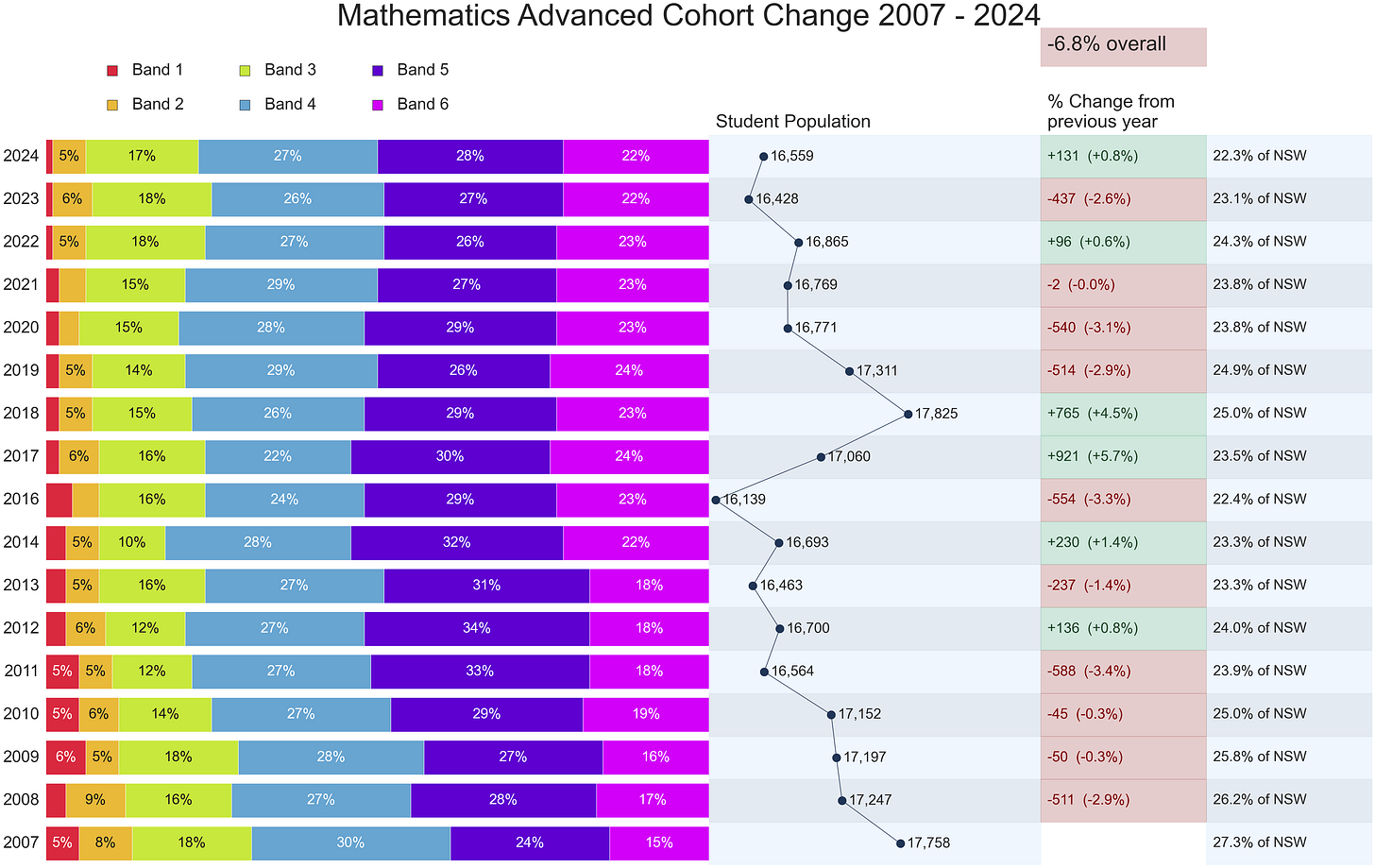
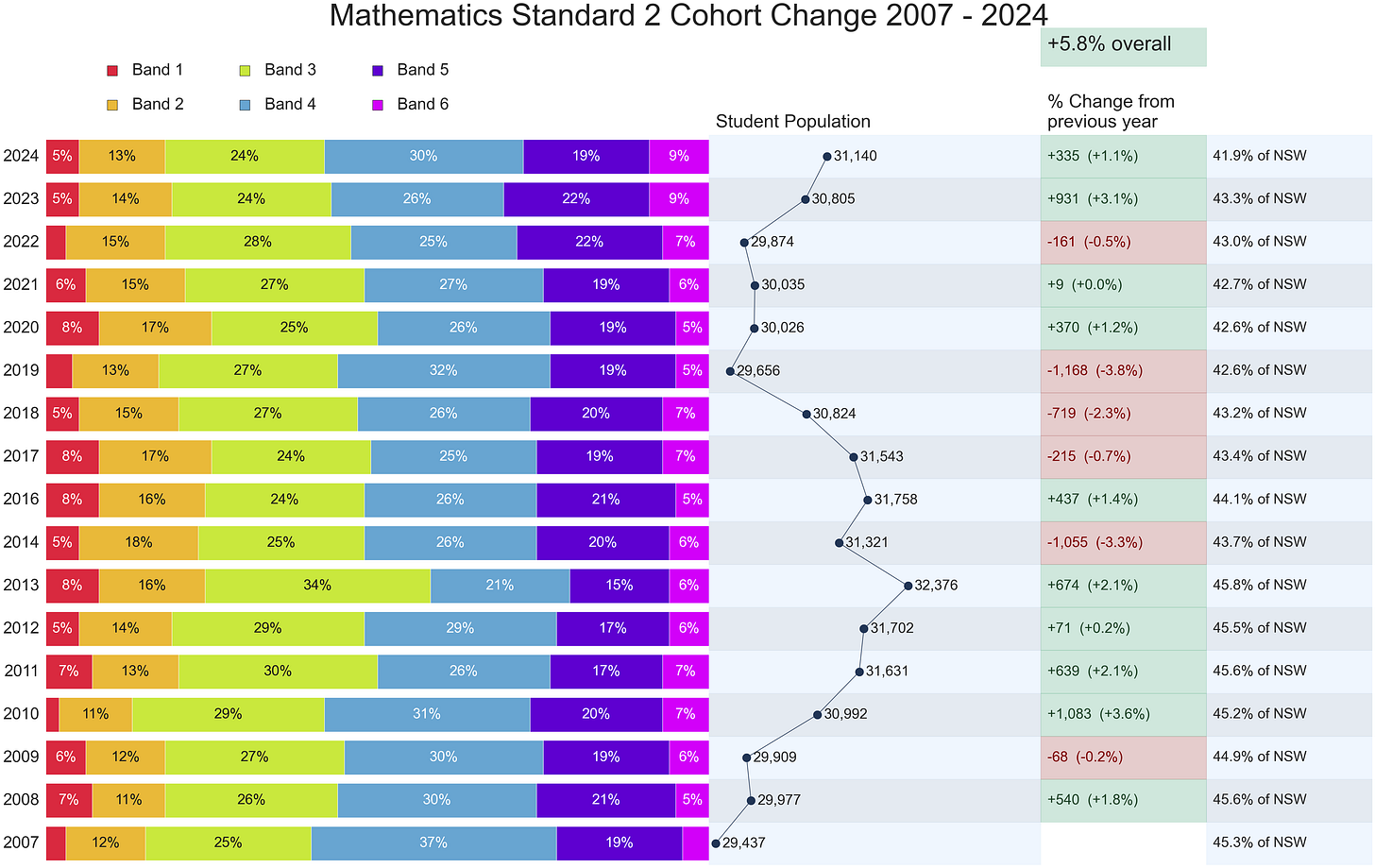

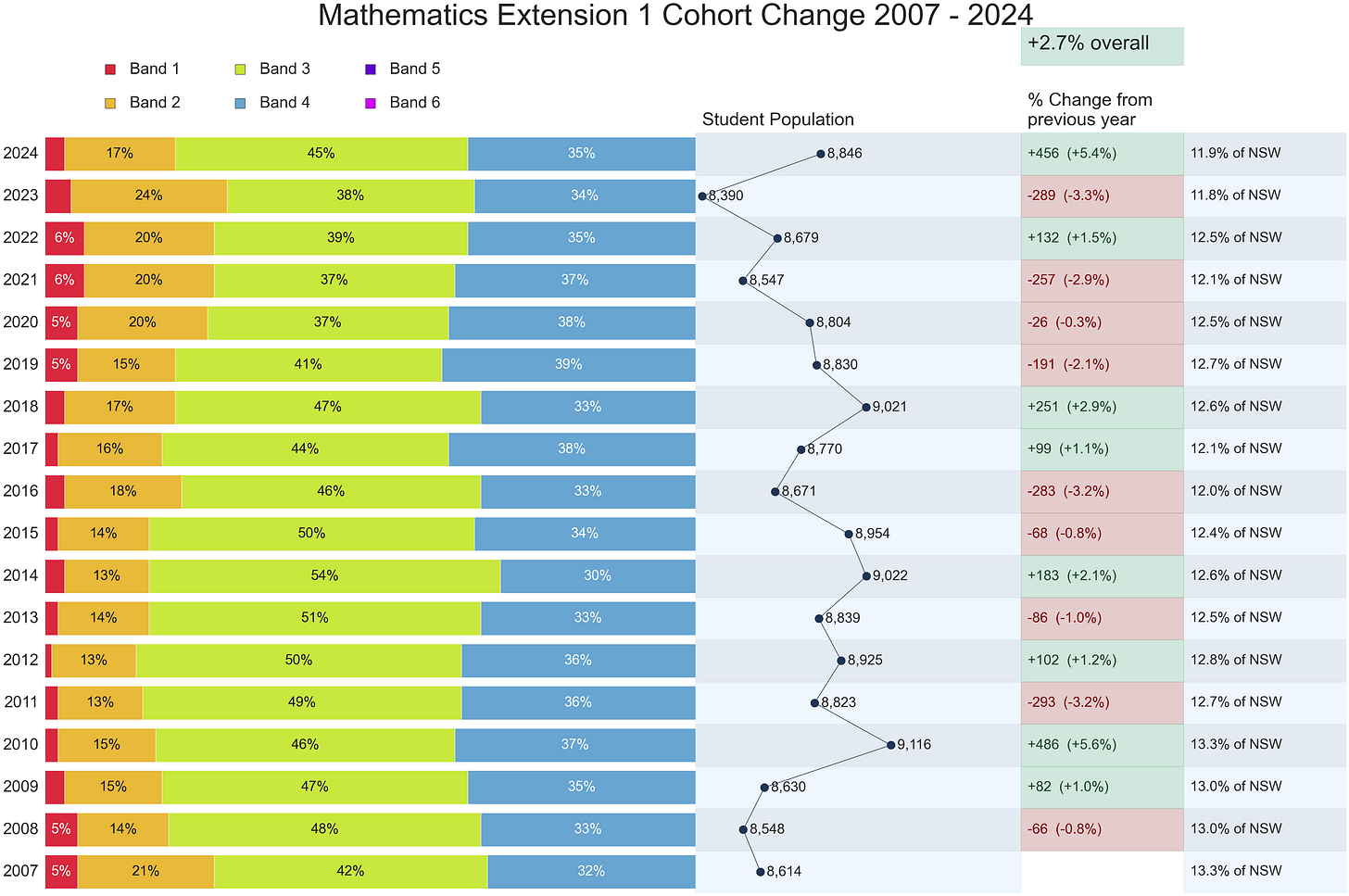
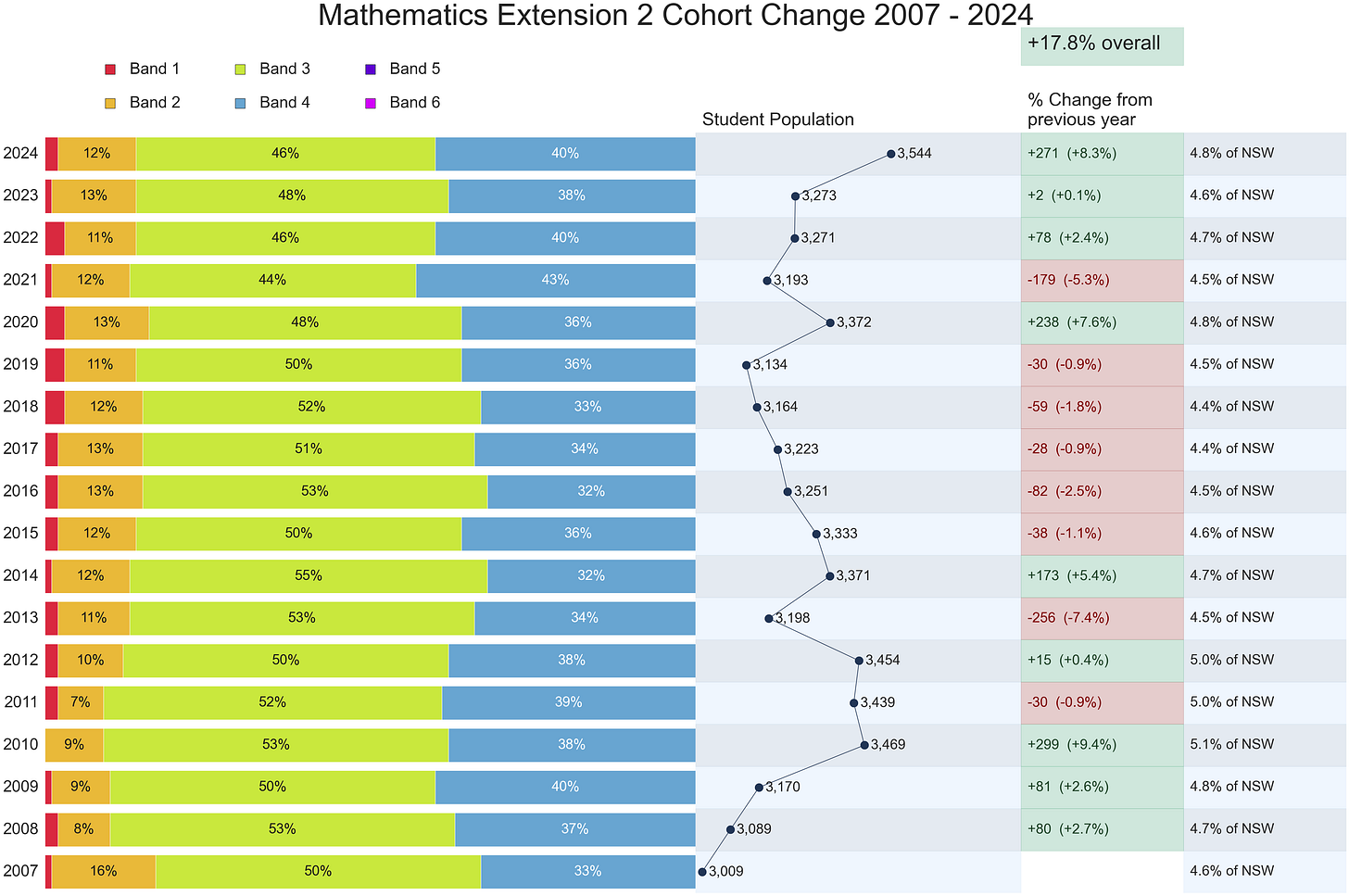
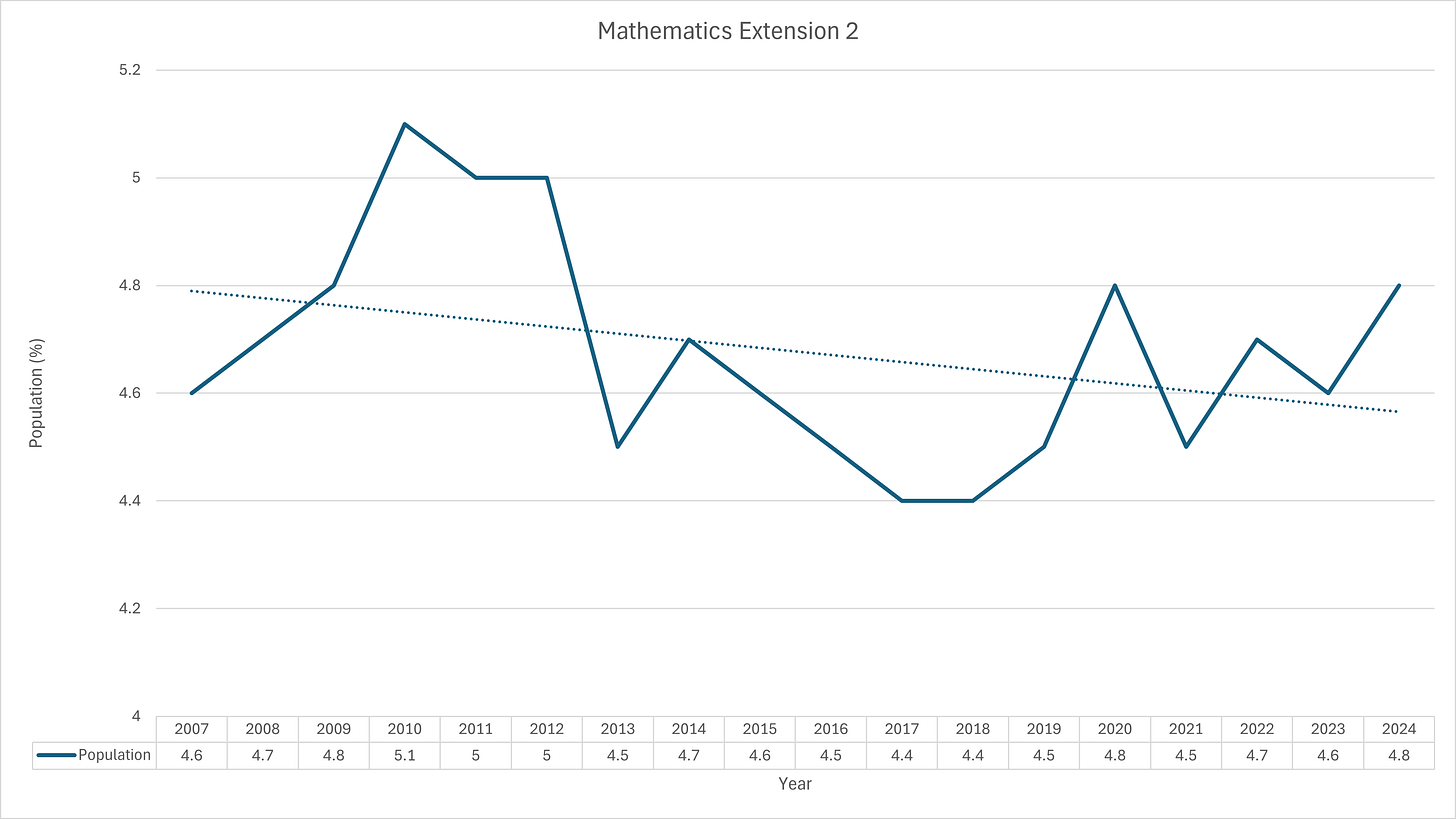
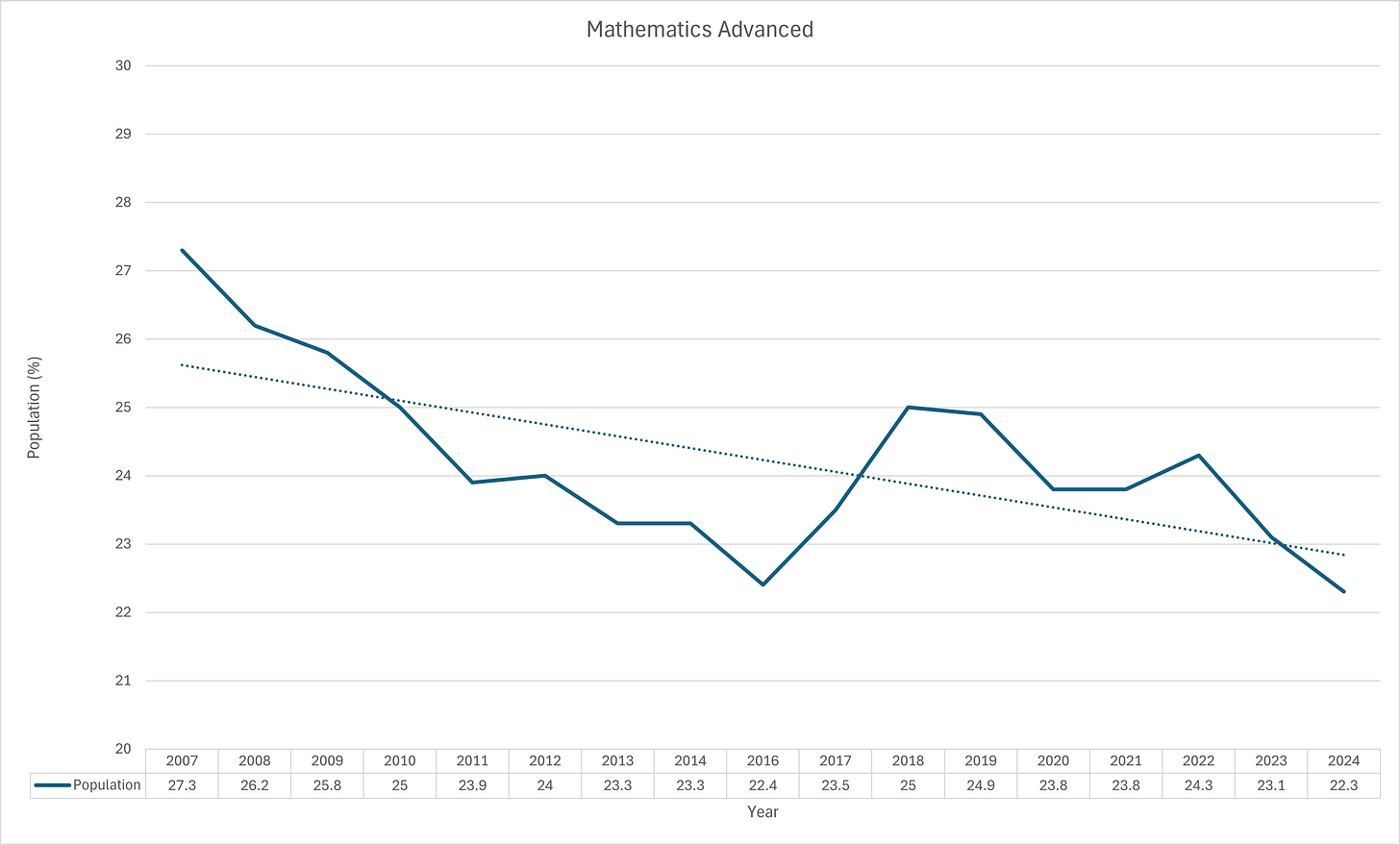

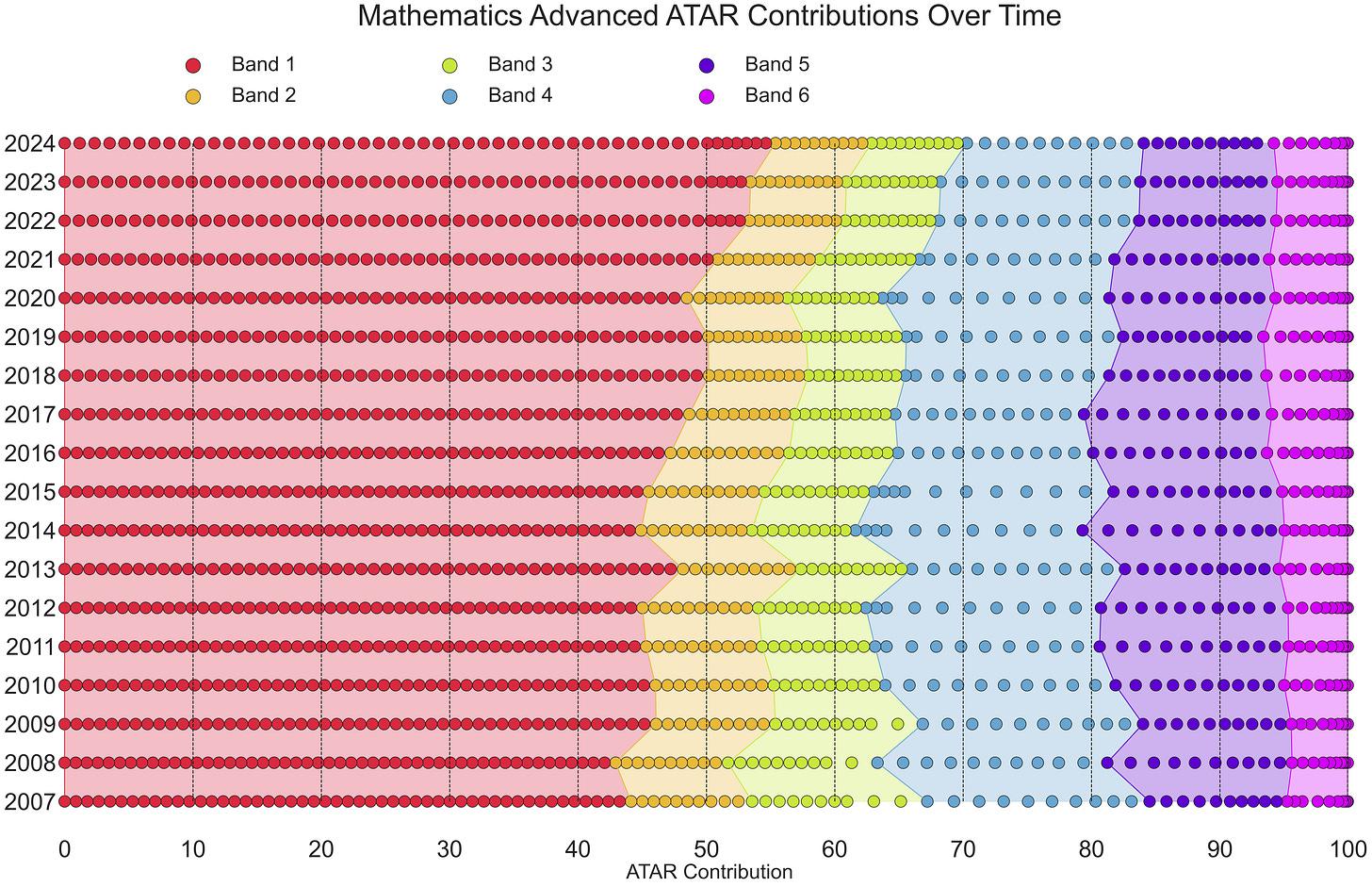

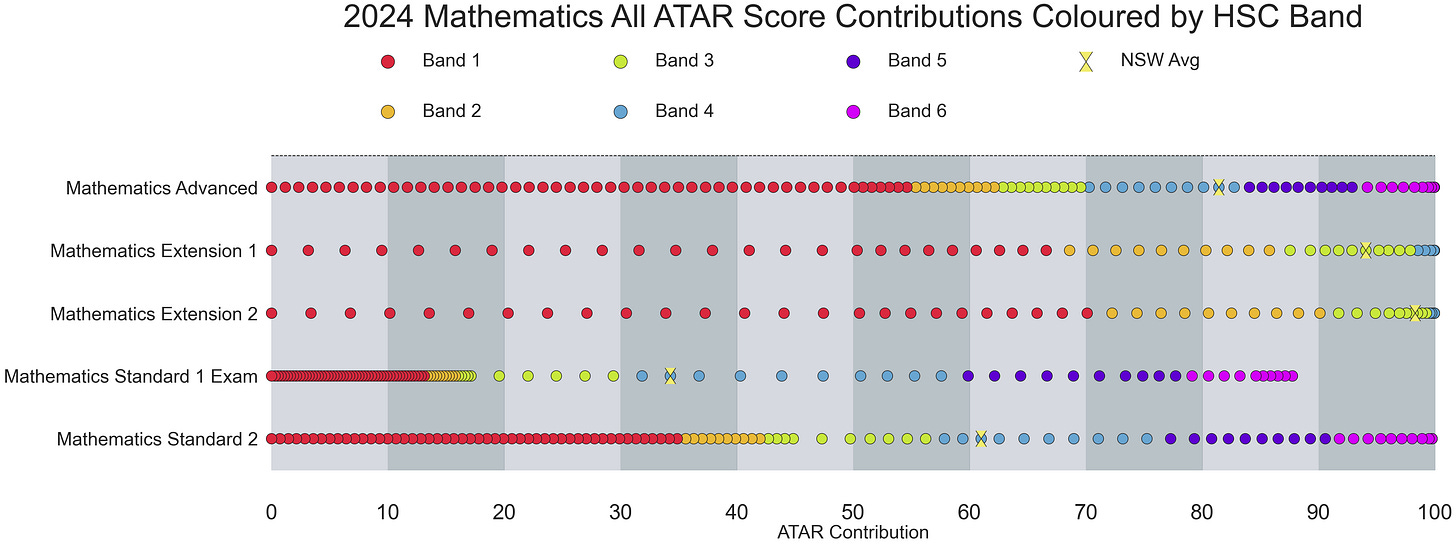
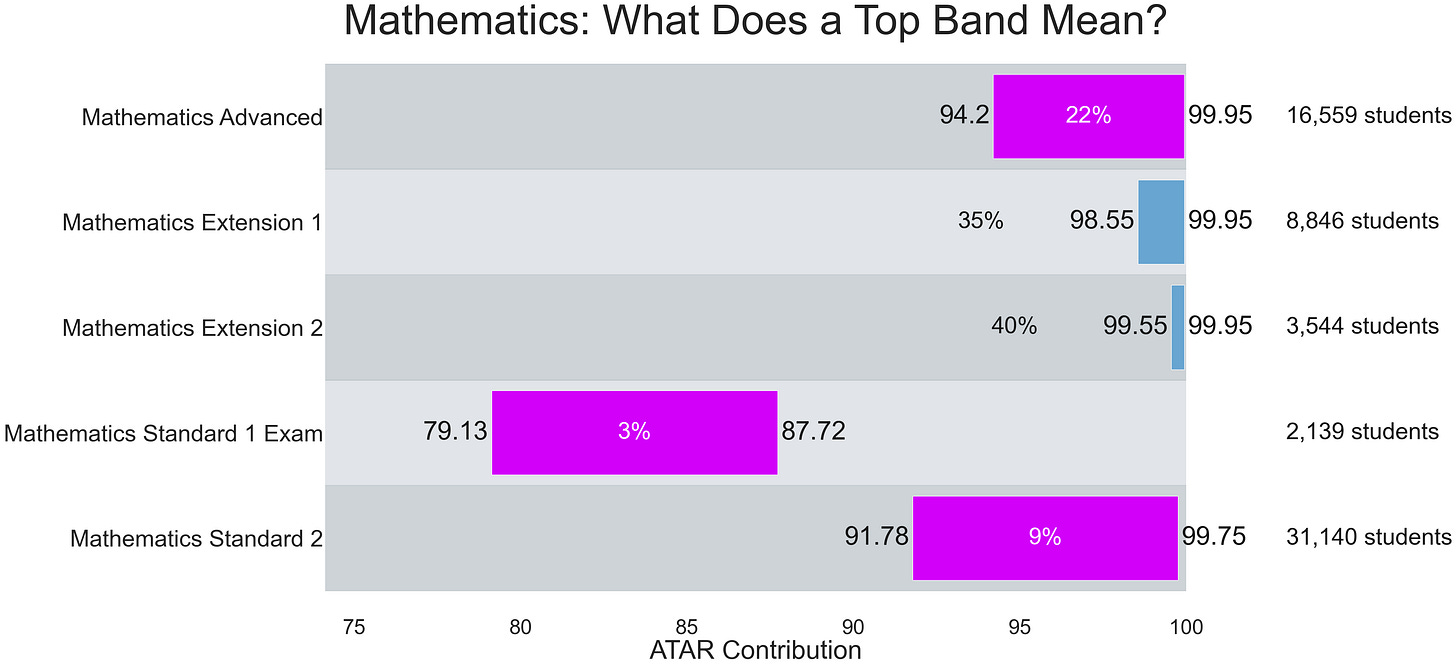
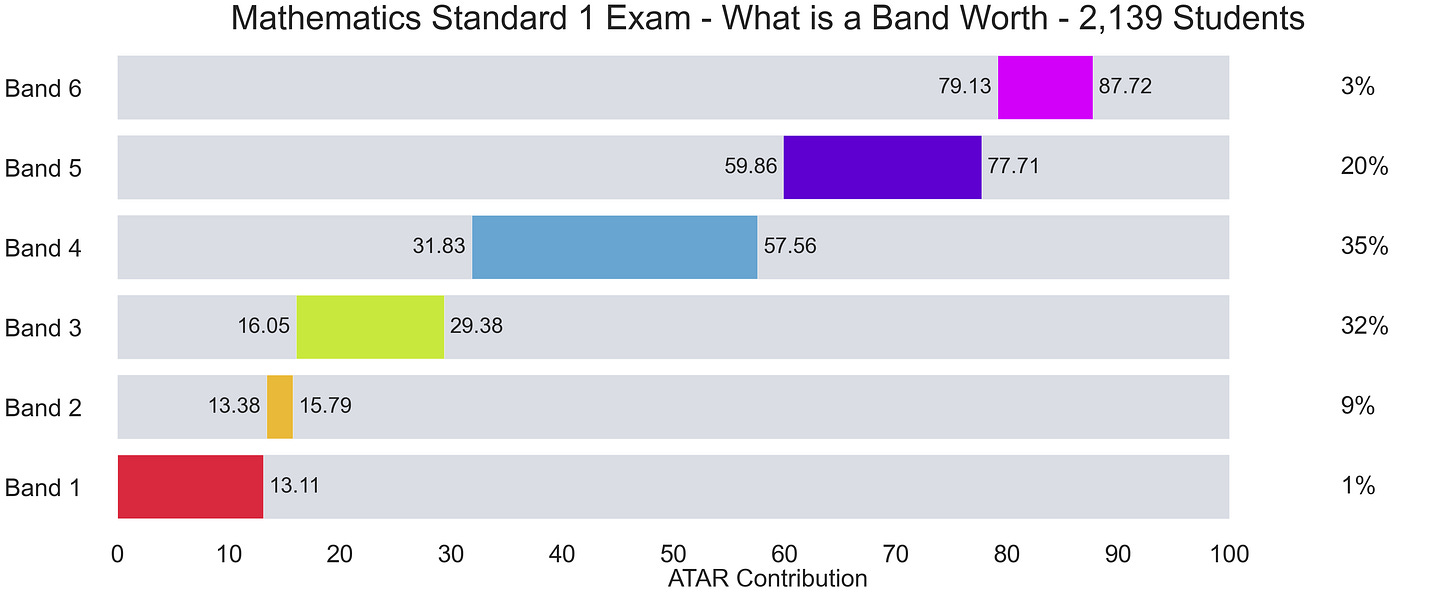
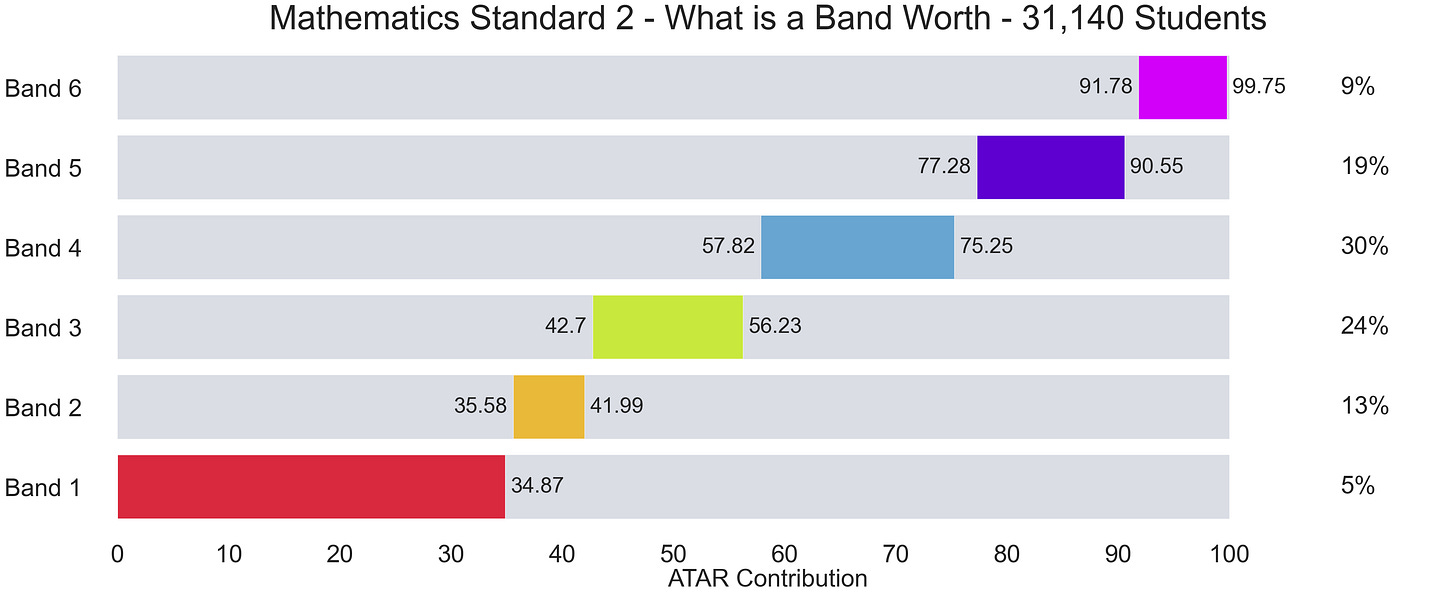
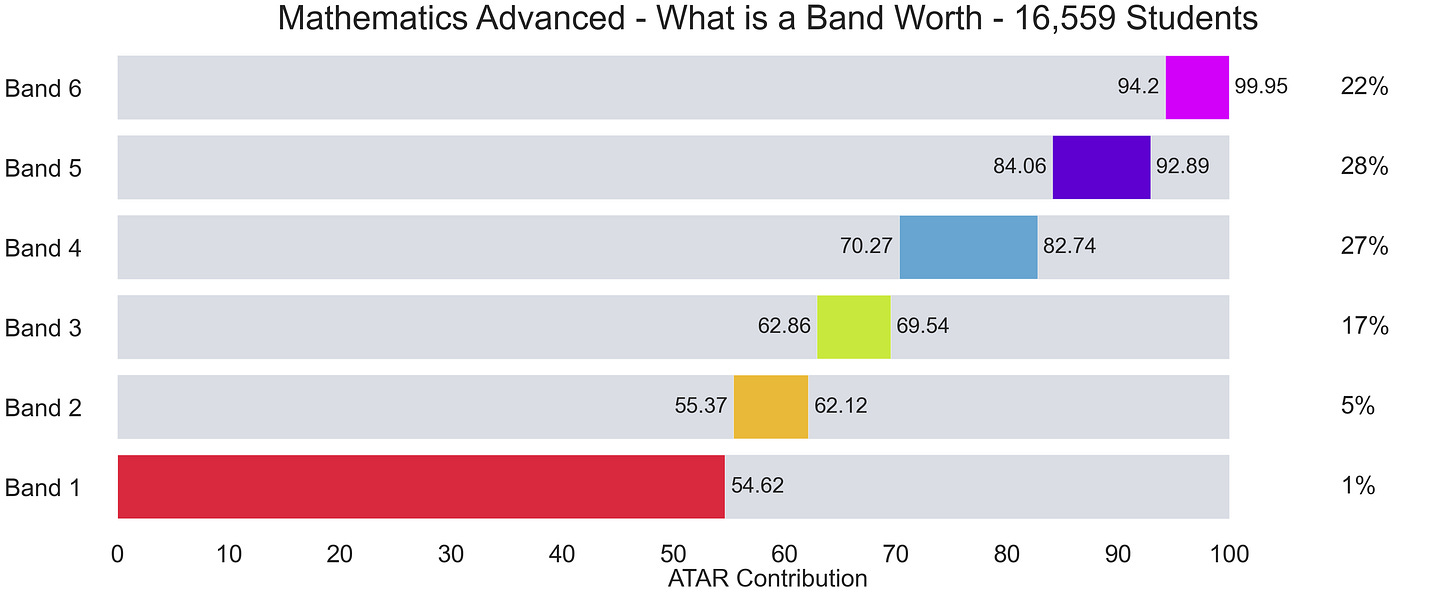
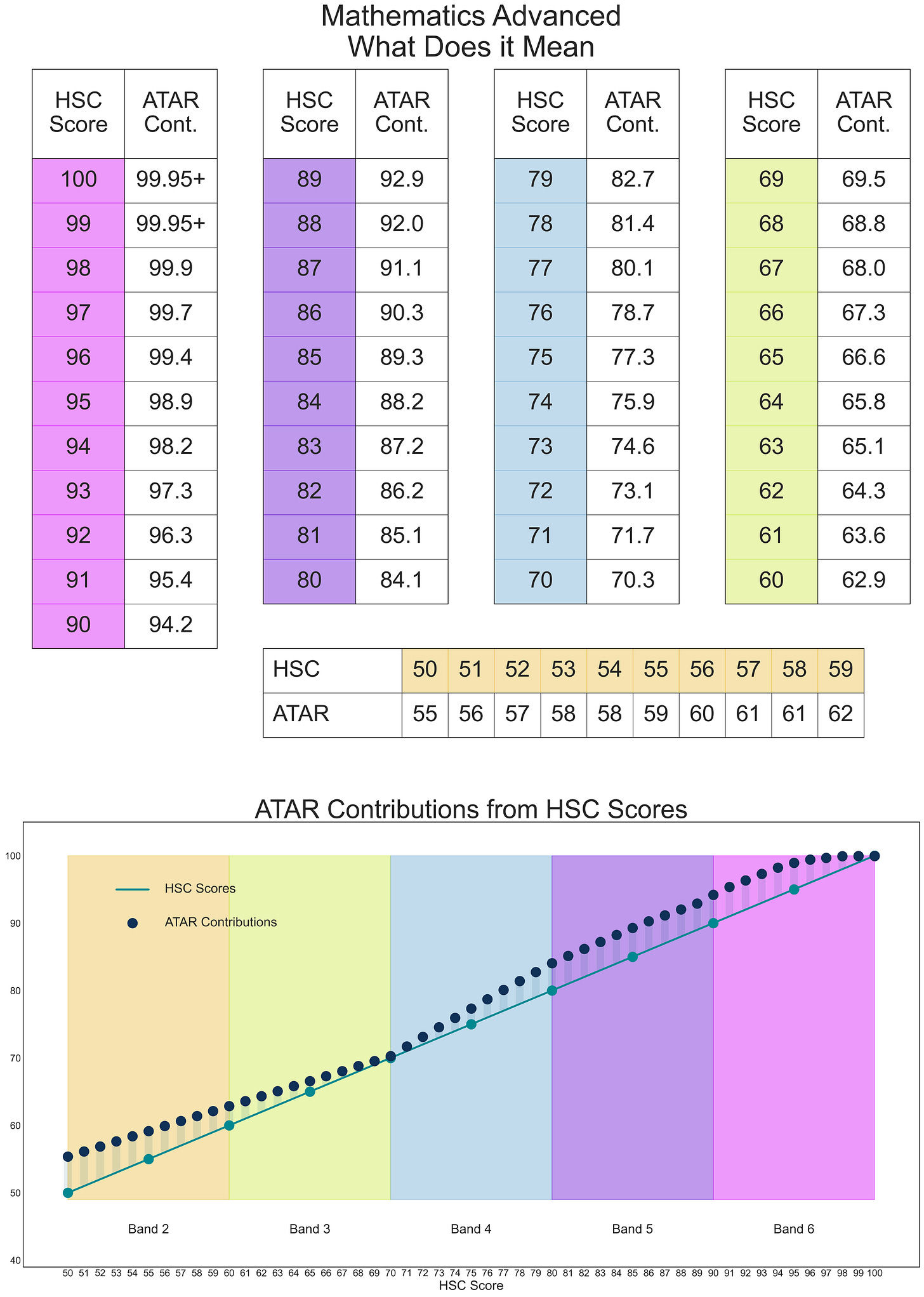

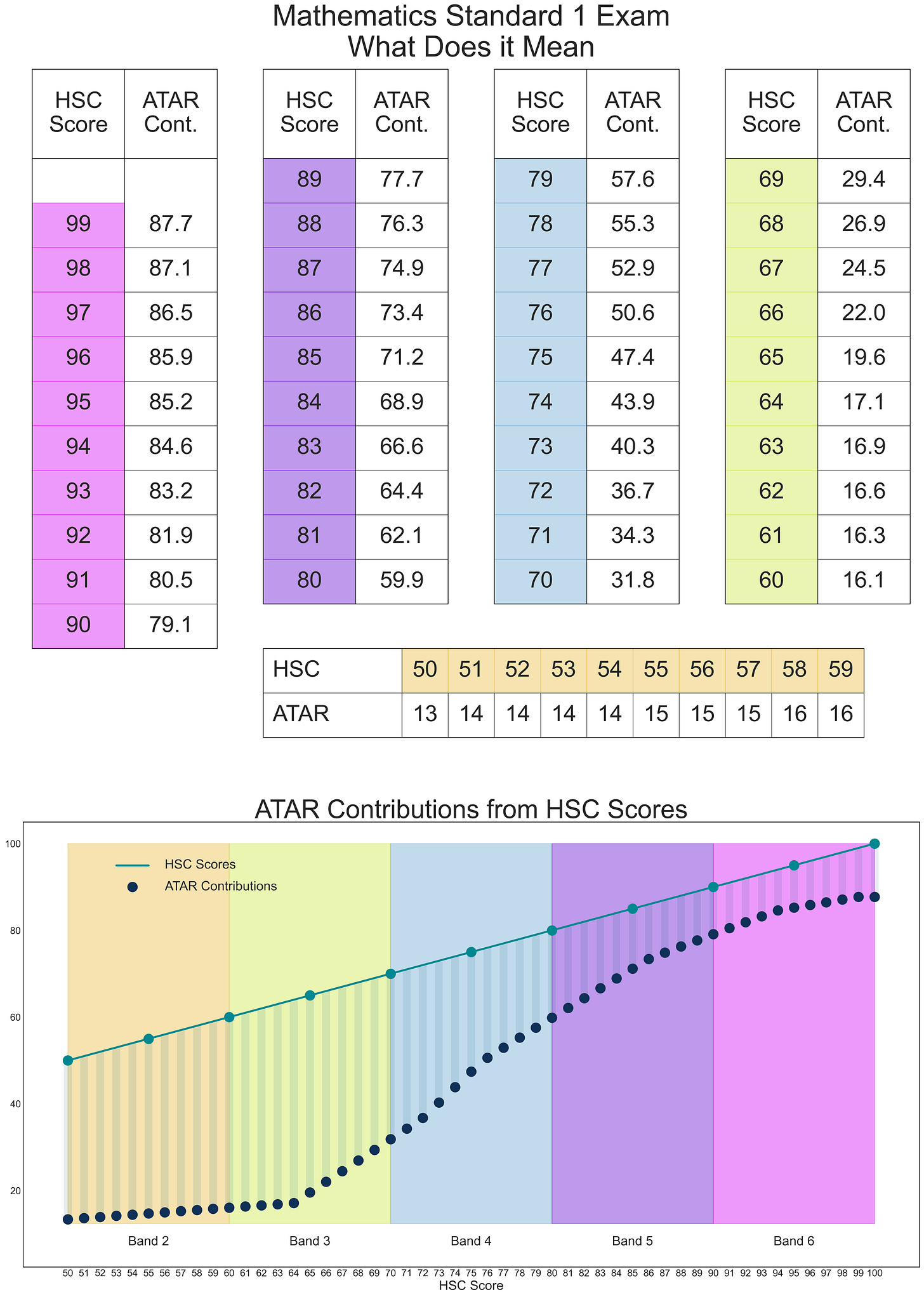
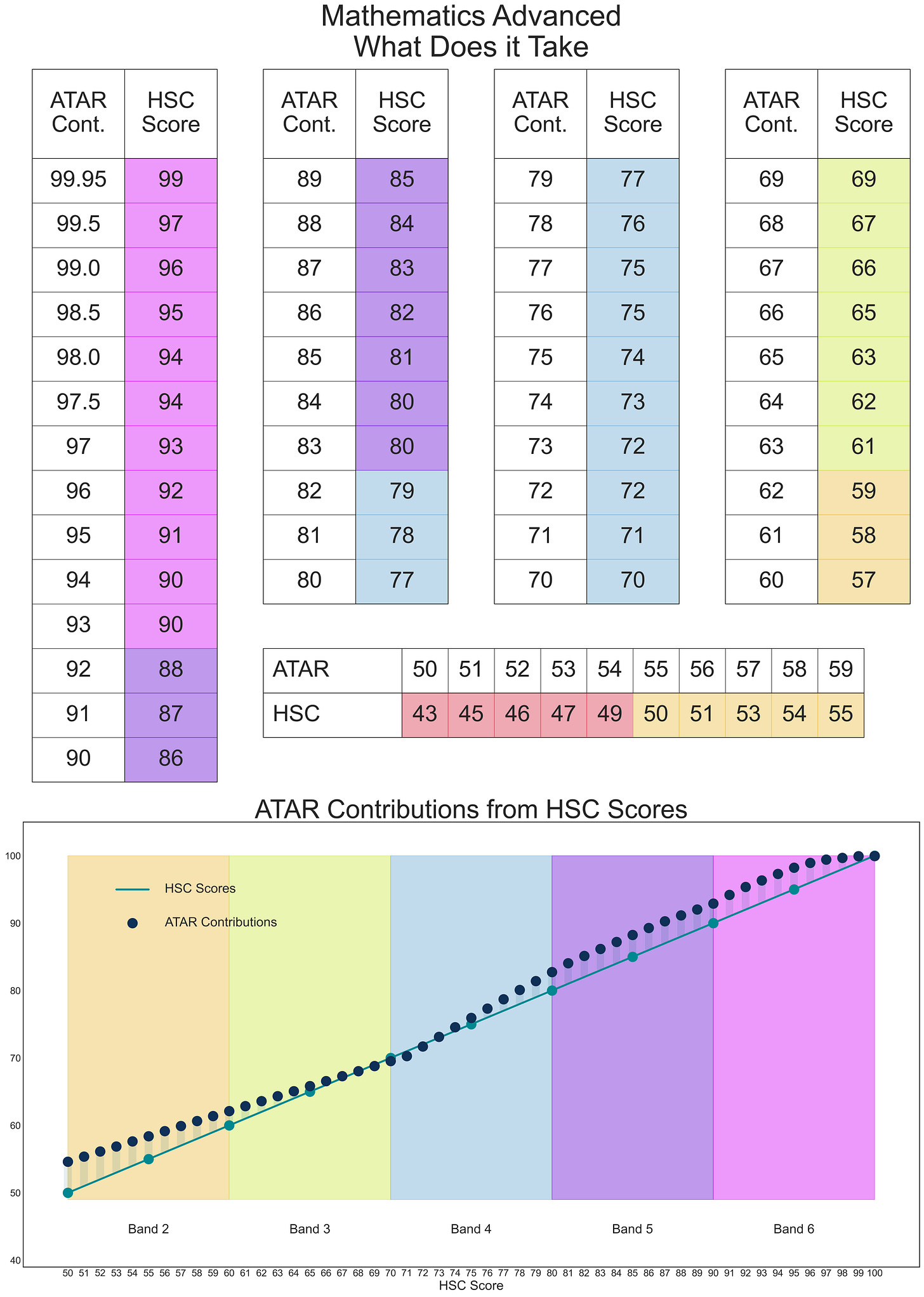
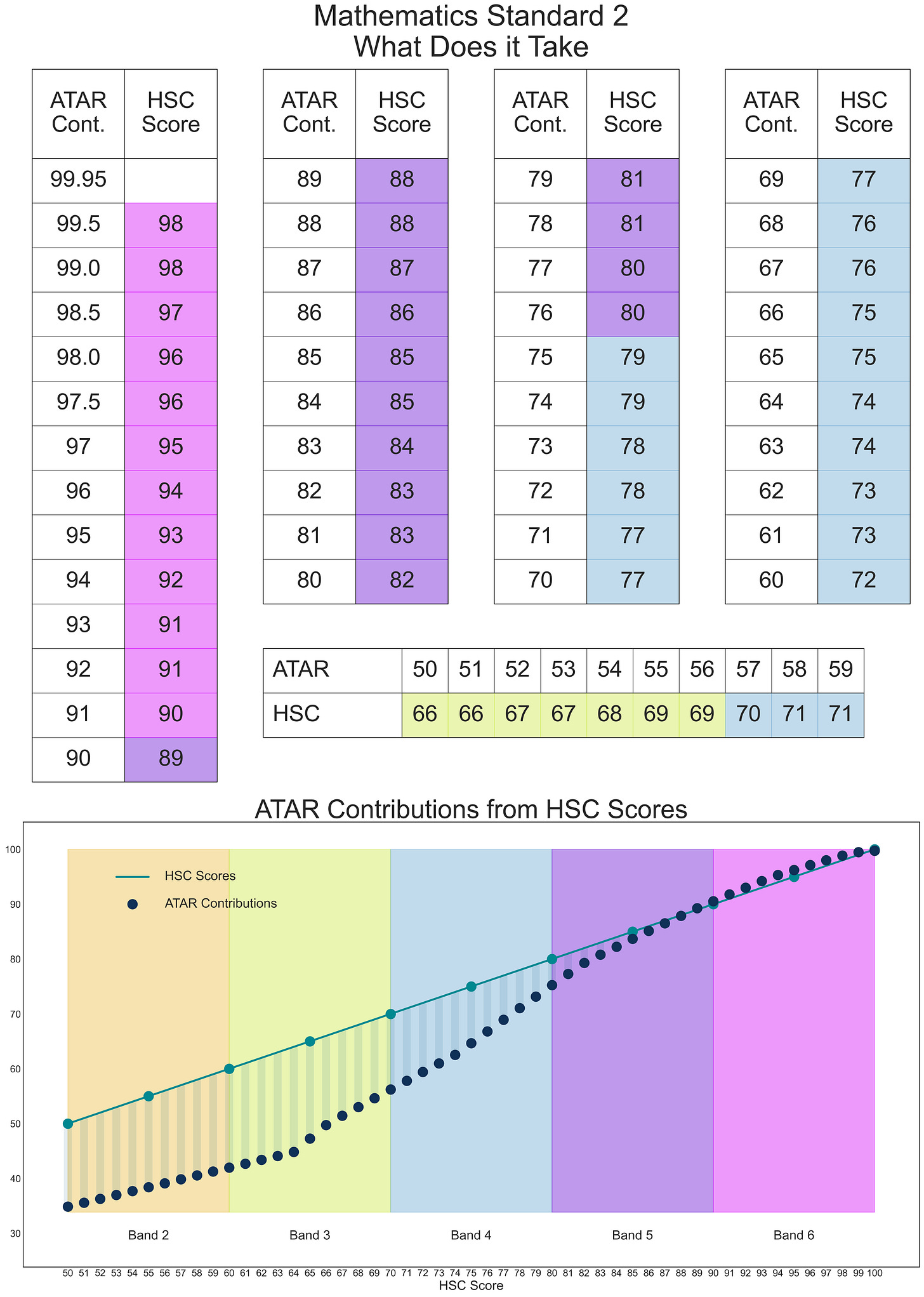
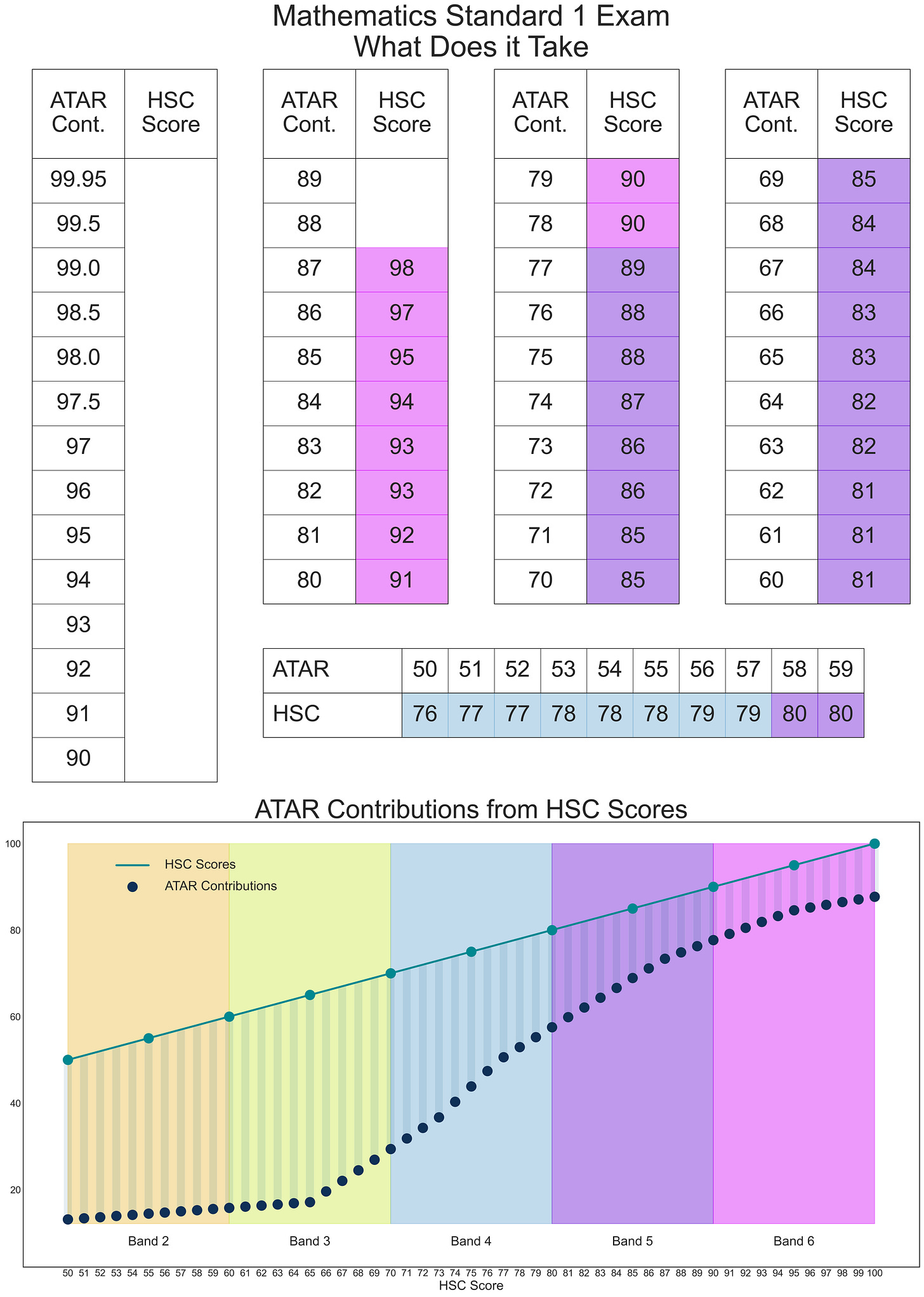
Thanks for the in-depth analysis, Graham. One concern I have with the Advanced vs Standard 2 discussion is that the top end of HSC Advanced is crowded with two groups of students. Firstly Extension 1 students, who also sit the Advanced exam. Secondly, I suspect a large number of students studying accelerated programs, who sit HSC Advanced in Year 11 and then Extension 1 and Extension 2 in Year 12. For those students who are on the fence between Advanced and Standard 2, how many are actually achieving those Band 5 and Band 6 results in Advanced?
I don’t believe that 'those who are capable of taking Advanced will do so' is an assumption underlying the scaling, however, whether or not it by and large true, is certainly a factor affecting the the relative scaling of it and Standard 2.